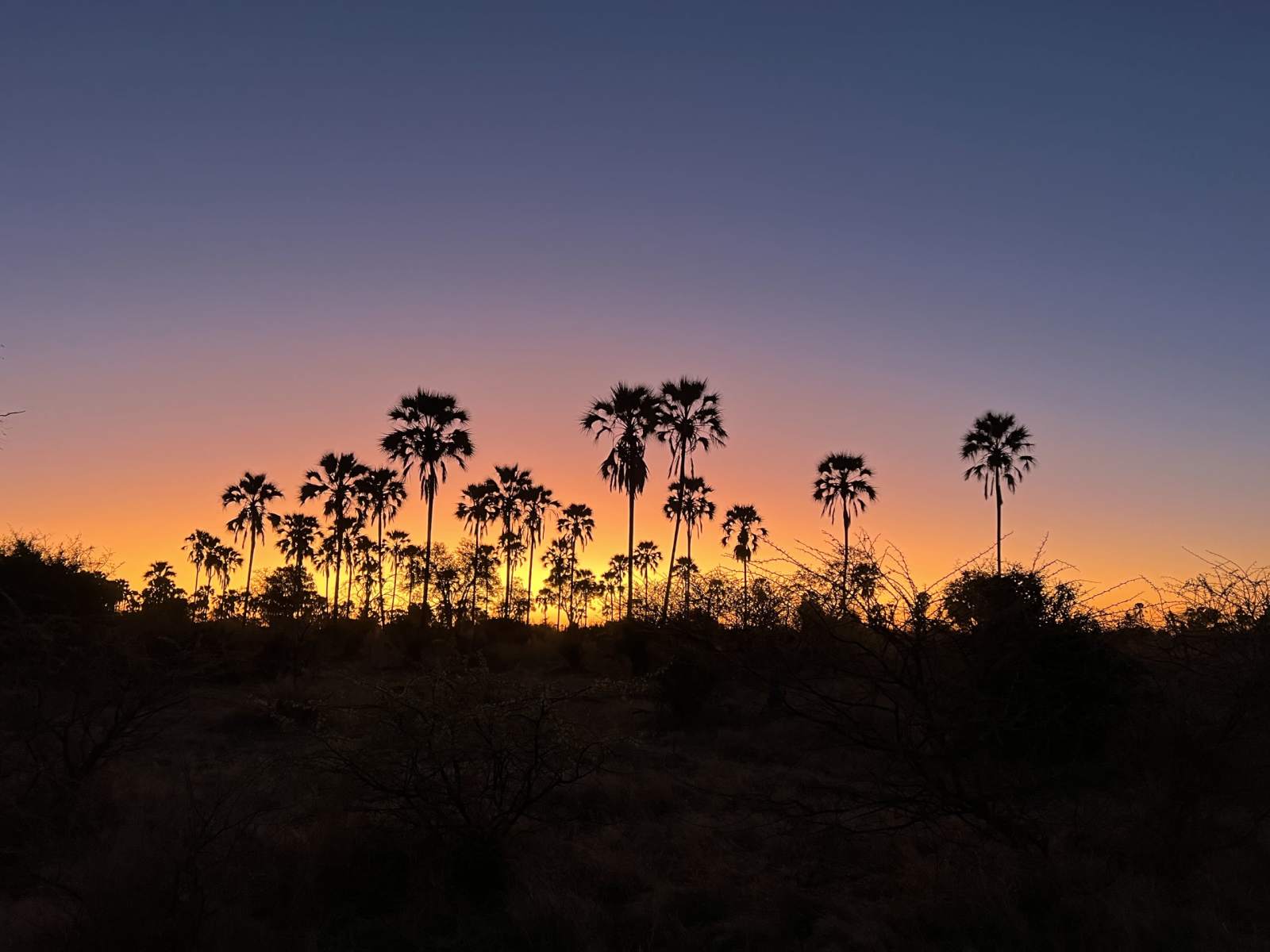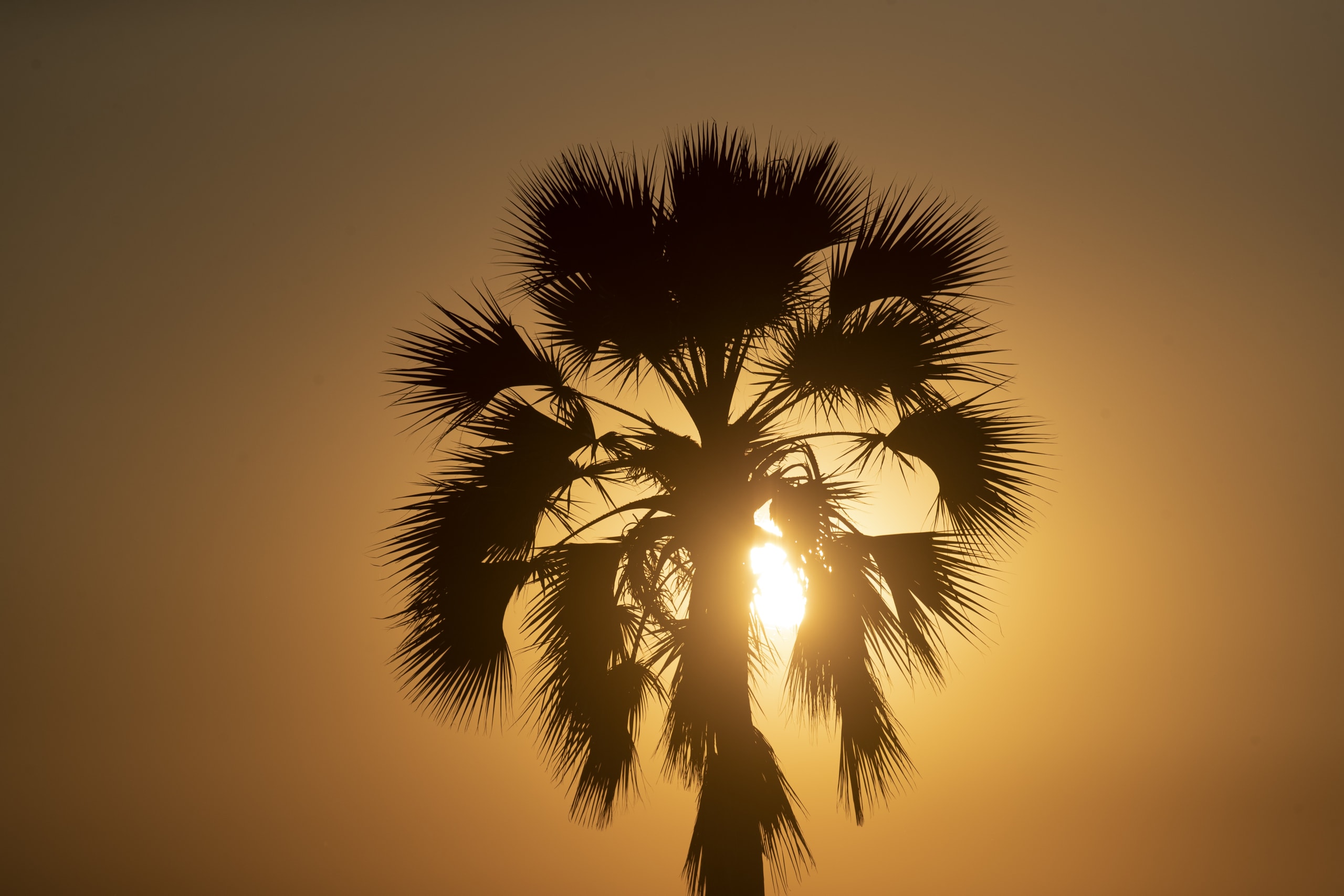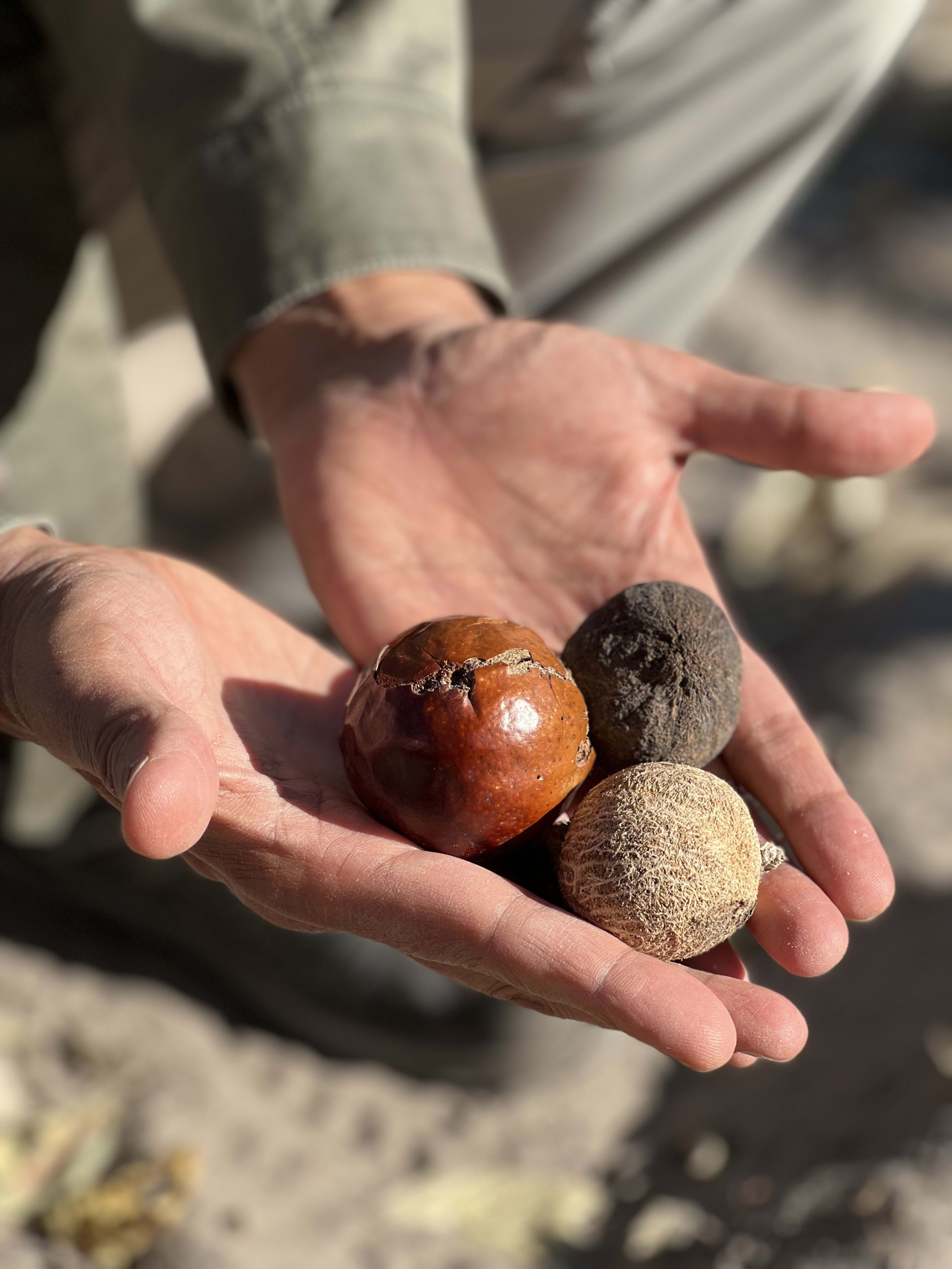How Lala Palms Spread in the Delta

You can’t go anywhere in the magnificent landscape of Mombo in Okavango Delta, Botswana, without seeing a fringe of incredibly tall and spindly lala palm trees dotting the horizon.

Much to my delight, I found out the lala palms are nature’s snack cabinet, drawing in all kinds of creatures to exploit their goodness. Elephants find the gingery tasting palm nuts irresistible (the fruit takes four years to ripen and fall off the tree). Many times on my journey in the delta, we were treated to a rapid-fire swishing sound, a sure signal that an elephant was vigorously shaking a tree to get the nuts to fall loose. Young bulls who don’t yet have the strength to push these sometimes 15- to 20-metre tall trees will often follow older bulls hoping to hoover up the spoils.

My wildlife guide James Kydd also pointed out that palm swifts, as their name suggests, nest under the leaves of lala palms, and use their saliva to secure their eggs in place. Their saliva is particularly sticky from the spiders and other insects they collect from the lower atmosphere. Local communities make palm wine from the tree’s sap and carve the hard white kernel inside the seed casing into trinkets. Meanwhile, lala palms gain a key advantage from drawing in elephants — seed dispersal. As elephants wander and poop them out in vast piles of fertile dung, the seeds are given a head start to germinate and are spread all over the delta.